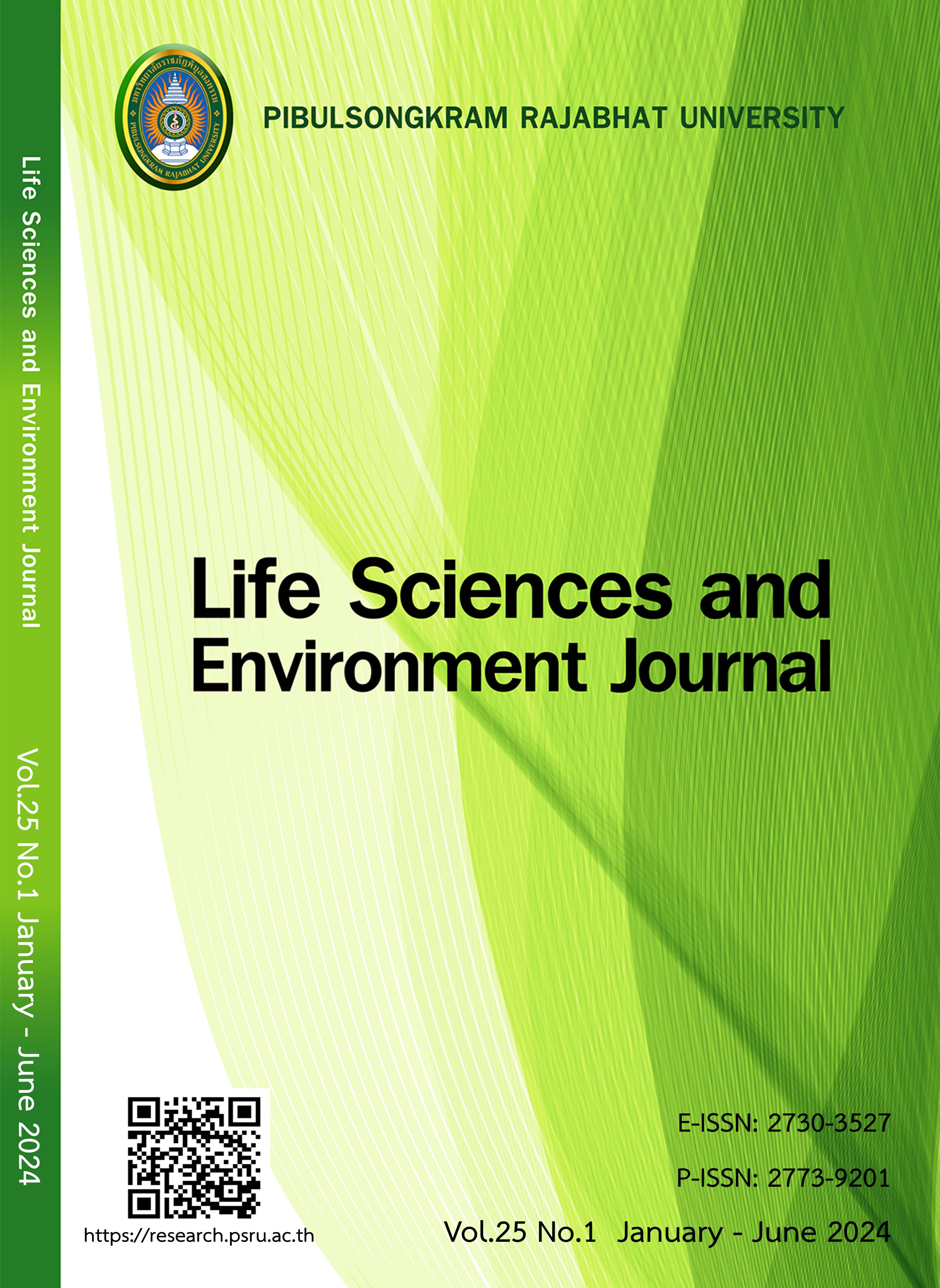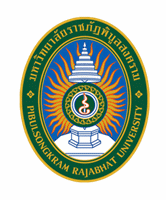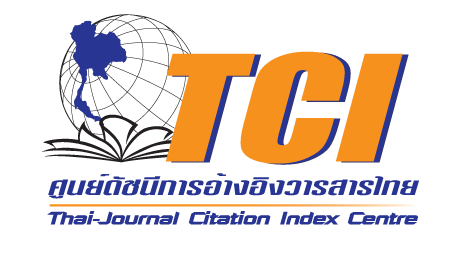การเปรียบเทียบวิธีการเก็บรักษา STREPTOMYCES TM32 เพื่อพัฒนาเป็นสูตรชีวภัณฑ์ยับยั้งเชื้อราก่อโรคพืชในดิน
DOI:
https://doi.org/10.14456/lsej.2024.18คำสำคัญ:
ชีวภัณฑ์ , การควบคุมโรคพืชด้วยชีวภาพ , เชื้อราก่อโรคพืช , สเตรปโตมัยสิทบทคัดย่อ
การป้องกันกําจัดศัตรูพืชด้วยชีวภัณฑ์จากจุลินทรีย์เป็นทางเลือกหนึ่งที่สามารถลดหรือทดแทนการใช้สารเคมีทางการเกษตรเพื่อให้ได้ผลผลิตที่มีความปลอดภัย ซึ่ง Streptomyces TM32 สามารถยับยั้งเชื้อราสาเหตุโรคพืชได้หลากหลายชนิดและสร้างสารส่งเสริมการเจริญของพืชได้ การวิจัยนี้
จึงมีวัตถุประสงค์เพื่อพัฒนาสูตรชีวภัณฑ์เพื่อยับยั้งการเจริญของเชื้อราที่ก่อโรคบริเวณรากของพืช
จาก Streptomyces TM32 โดยเปรียบเทียบวิธีการเก็บรักษาเชื้อเพื่อพัฒนาเป็นสูตรชีวภัณฑ์จำนวน
4 สูตร (1. ข้าวสวย, 2. แป้งสาลีและโดโลไมต์ (6:3), 3. ทัลคัมและ CMC (2:1) และ 4. แป้งข้าวเจ้า
น้ำมันปาล์ม และ ซูโครส (87:3:10) อัตราส่วนปริมาตรโดยปริมาตร) และทดสอบการมีชีวิตรอดของชีวภัณฑ์ในแต่ละสูตรในสภาวะการเก็บที่อุณหภูมิ 10 และ 35oC นาน 14 28 และ 42 วัน ผลพบว่าสูตรที่ 1 (ข้าวสวย) เมื่อเก็บไว้ที่อุณหภูมิ 35oC นาน 14 วัน มีปริมาณเชื้อมากที่สุดเท่ากับ 6.71 ± 0.08 log CFU/g ดังนั้นจึงใช้สูตรที่ 1 ในการทดสอบประสิทธิภาพของชีวภัณฑ์ในการยับยั้งเชื้อราในพืช โดยแบ่งชุดการทดลองเป็น 4 ชุด คือ ดินที่ไม่ผ่านการฆ่าเชื้อที่ไม่มีการเติมชีวภัณฑ์ (ชุดการทดลองที่ 1) และ มีการเติมชีวภัณฑ์ (ชุดการทดลองที่ 2) ดินที่ผ่านการฆ่าเชื้อที่ไม่มีการเติมชีวภัณฑ์ (ชุดการทดลองที่ 3) และมีการเติมชีวภัณฑ์ (ชุดการทดลองที่ 4) ทำการทดลองในสภาวะความชื้นสัมพัทธ์ 70% อุณหภูมิ 25oC รดน้ำทุก 2 วัน เป็นเวลา 35 วัน เพื่อเปรียบเทียบอัตราการงอก ความสูงเฉลี่ยของพืช (ต้นพริก) ผลพบว่าชุดการทดลองที่ 2 มีอัตราการงอกสูงสุด (80%) แต่ความสูงเฉลี่ยของต้นพริกหลังจาก 35 วันของชุดการทดลองนี้มีค่าต่ำกว่าชุดควบคุมที่ไม่มีการเติมเชื้อลงไป (ชุดการทดลองที่ 1 และ 3)
References
Al-Dhabi NA, Esmail GA, Ghilan AKM, Arasu MV. Isolation and screening of Streptomyces sp. from the environment of Saudi Arabia with concomitant production of lipase and protease in submerged fermentation. Saudi Journal of Biological Sciences 2020;27(1):474–479.
Bonaterra A, Badosa E, Daranas N, Francés J, Roselló G, Montesinos E. Bacteria as biological control agents of plant diseases. Microorganisms 2022;10:1759. doi: 10.3390/microorganisms10091759.
Dagher F, Olishevska S, Philion V, Zheng J, Déziel E. Development of a novel biological control agent targeting the phytopathogen Erwinia amylovora. Heliyon 2020;6(10):e05222. doi:10.1016/j. heliyon. 2020.e05222.
Garvey M. Bacteriophages and food production: biocontrol and bio-preservation options for food safety. Antibiotics 2022;11:1324. doi: 10.3390/antibiotics11101324.
Hu R, Yu C, Jin Y, Pray C, Deng H. Impact of government policies on research and development (R&D) investment, innovation, and productivity: Evidence from pesticide firms in China. Agriculture 2022;12(5):709. doi: 10.3390/agriculture12050709.
Lernoud J, Willer H. Current statistics on organic agriculture worldwide: area, operators, and market. In Willer H, Lernoud J. (Eds.), The world of organic agriculture. statistics and emerging trends. FiBL & IFOAM – Organics International. Rheinbreitbach: Medienhaus Plump; 2017:36-74.
Nakaew N, Lumyong S, Sloan TW, Sungthong R. Bioactivities and genome insights of a thermotolerant antibiotics-producing Streptomyces sp. TM32 reveal its potentials for novel drug discovery. MicrobiologyOpen 2019;8:1-7.
Nakaew N, Rangjaroen C, Sungthong R. Utilization of rhizospheric Streptomyces for biological control of Rigidoporus sp. causing white root disease in rubber tree. European Journal of Plant Pathology 2015;142:93-105.
Tamreihao K, Ningthoujam DS, Nimaichand S, Singh ES, Reena P, Singh SH, Nongthomba U. Biocontrol and plant growth promoting activities of a Streptomyces corchorusii strain UCR3-16 and preparation of powder formulation for application as biofertilizer agents for rice plant. Microbiological Research 2016;192:260-270.
Teixidó, N, Usall, J, Torres, R. Insight into a successful development of biocontrol agents: production, formulation, packaging, and shelf life as key aspects. Horticulturae 2022;8(4):305. doi: 10.3390/ horticulturae8040305.
Downloads
เผยแพร่แล้ว
How to Cite
ฉบับ
บท
License
Copyright (c) 2024 Life Sciences and Environment Journal

This work is licensed under a Creative Commons Attribution-NonCommercial-NoDerivatives 4.0 International License.
Each article is copyrighted © by its author(s) and is published under license from the author(s).









